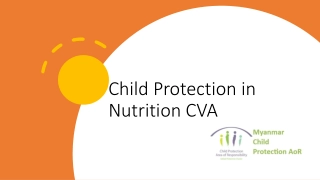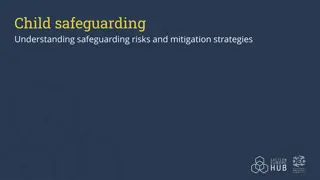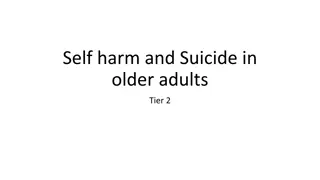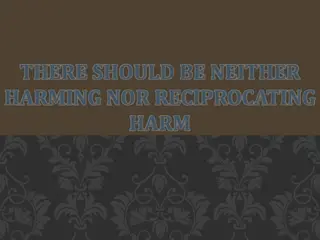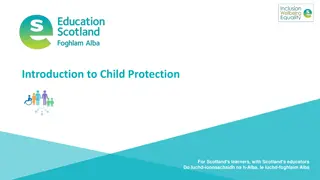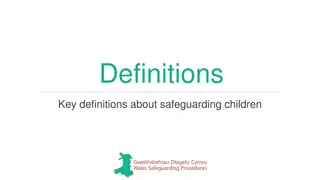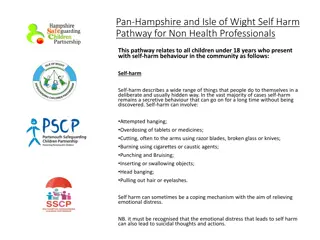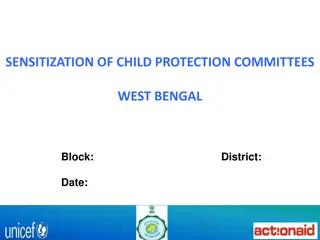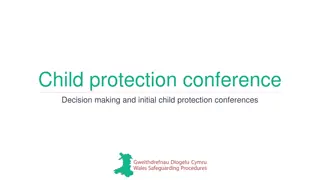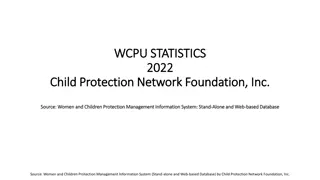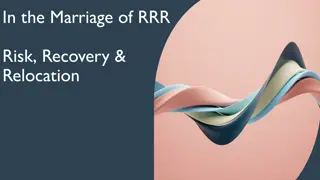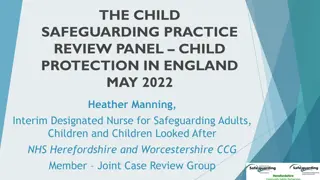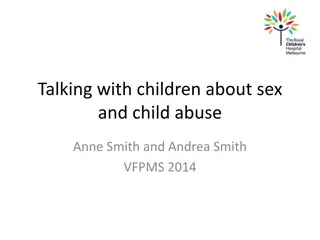Understanding Significant Harm in Child Protection Cases
In child protection cases, significant harm must be proven for court intervention. Harm can include ill-treatment or impaired health and development. The state may intervene if necessary, but diverse parenting standards are tolerated. Evidence-based findings are crucial, and local authorities must provide proper evidence to support their case.
Download Presentation

Please find below an Image/Link to download the presentation.
The content on the website is provided AS IS for your information and personal use only. It may not be sold, licensed, or shared on other websites without obtaining consent from the author. Download presentation by click this link. If you encounter any issues during the download, it is possible that the publisher has removed the file from their server.
E N D
Presentation Transcript
Threshold Refresher Threshold Refresher Louise Walls Louise Walls
S.31 Children Act 1989 (1)The Court must be satisfied that a.The child concerned is suffering, or likely to suffer, significant harm; and b.The harm, or likelihood of harm, is attributable to: i.The care given to the child, or likely to be given if the order were not made, not being what it would be reasonable to expect a parent to give; or ii.The child s being beyond parental control.
Significant Harm Harm means ill-treatment or the impairment of health or development including, for example, impairment suffered from seeing or hearing the ill-treatment of another (s.31(2) CA 1989). When the harm turns upon health or development, the court must compare the child s health or development with that which could reasonably be expected of a similar child (s.31(10) CA 1989). Significant means considerable, noteworthy or important Humberside CC v B 1993 1 FLR 257.
The harm must be significant enough to justify the intervention of the state and disturb the autonomy of the parents to bring up their children by themselves in the way they choose. It must be significant enough to enable the court to make a care order or a supervision order if the welfare of the child demands it (Re MA 2009 EWCA Civ 853). Society must be willing to tolerate diverse standards of parenting, including the eccentric, the barely adequate and the inconsistent. It is not the province of the state to spare children all the consequences of defective parenting (Re L 2007 1 FLR 2050).
Re A (a child) [2015] EWFC 11 Sir James Munby (President as he was then): Para 8 it is for the local authority to prove, on a balance of probabilities , the facts upon which it seeks to rely. I draw attention to what, in Re A (A Child) (No 2) [2011] EWCA Civ 12, [2011] 1 FCR 141, para 26, I described as: the elementary proposition that findings of fact must be based on evidence (including inference that can properly be drawn from the evidence) and not on suspicion or speculation.
Practical and procedural consequences Para 9: the local authority, if its case is challenged on some factual point, must adduce proper evidence to establish what it seeks to prove. Much material to be found in local authority case records or social work chronologies is hearsay, often second- or third-hand hearsay. Hearsay evidence is, of course, admissible in family proceedings. But, and as the present case so vividly demonstrates, a local authority which is unwilling or unable to produce the witnesses who can speak of such matters first-hand, may find itself in great, or indeed insuperable, difficulties if a parent not merely puts the matter in issue but goes into the witness-box to deny it. It is a common feature of care cases that a local authority asserts that a parent does not admit, recognise or acknowledge something or does not recognise or acknowledge the local authority s concern about something. If the thing is put in issue, the local authority must both prove the thing and establish that it has the significance attributed to it by the local authority.
Para 10: the formulation of threshold and proposed findings of fact. The schedule of findings in the present case contained, as we shall see, allegations in relation to the father that he appears to have lied or colluded, that various people have stated or reported things, and that there is an allegation . With all respect to counsel, this form of allegation, which one sees far too often in such documents, is wrong and should never be used. It confuses the crucial distinction, once upon a time, though no longer, spelt out in the rules of pleading and well understood, between an assertion of fact and the evidence needed to prove the assertion The relevant allegation is not that he appears to have lied or X reports ; the relevant allegation, if there is evidence to support it, is surely that he lied or he did Y . +
Linking Para 12: the need to link the facts relied upon by the local authority with its case on threshold, the need to demonstrate why, as the local authority asserts, facts A + B + C justify the conclusion that the child has suffered, or is at risk of suffering, significant harm of types X, Y or Z. Sometimes the linkage will be obvious, as where the facts proved establish physical harm. But the linkage may be very much less obvious where the allegation is only that the child is at risk of suffering emotional harm or, as in the present case, at risk of suffering neglect. The local authority s evidence and submissions must set out the argument and explain explicitly why it is said that, in the particular case, the conclusion indeed follows from the facts.
Common Pitfalls - Lack of clarity in the allegation itself or linking this to the harm - Lack of clarity regarding the type of harm - Lack of primary evidence (including over reliance on multiple hearsay in reports or records & the chronology) - Lack of references to the evidence
Is your Threshold? Succinct with clear and direct allegations; Clear in respect of whether what is alleged has caused harm or significant harm; Specific about what significant harm the child has suffered or is likely to suffer; Establishing the causal link between a stated fact and the alleged harm; Properly evidenced (direct evidence should be used in preference to hearsay evidence); & Accessible to the person who needs to respond.
Additional Case law The London Borough of Newham v The Mother & Ors [2023] EWFC 60 HHJ Reardon: 33. In any case where a court has delivered judgment, particularly where findings have been made, the judgment will be the starting point for future decision-making, and therefore any account of the background set out in a social work statement or other document should take the judgment as its primary source. There is no point in trawling through old documents to put together a history when the facts have already been determined, and to do so is likely to create a confusing and misleading picture. West Sussex County Council and K [2022] EWFC 170


